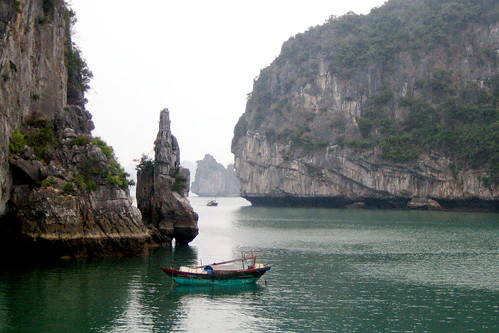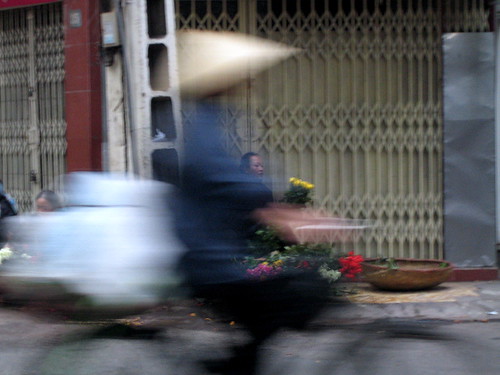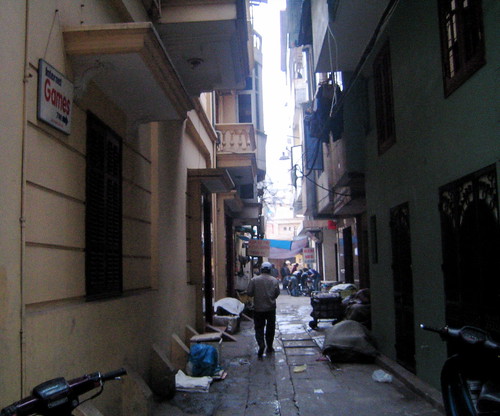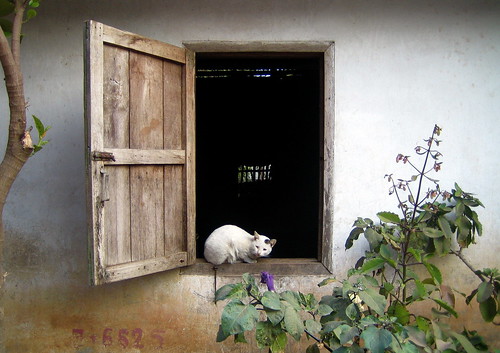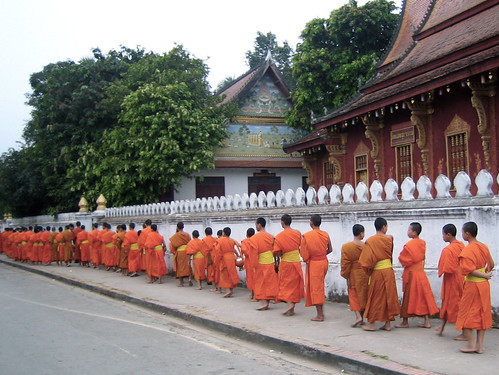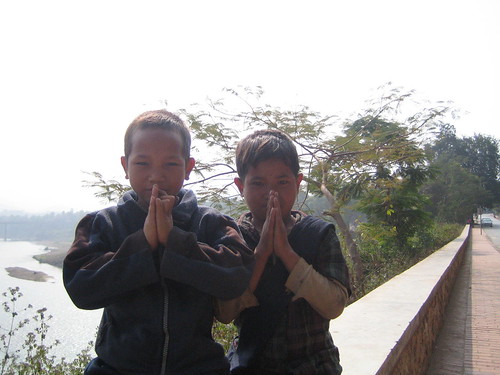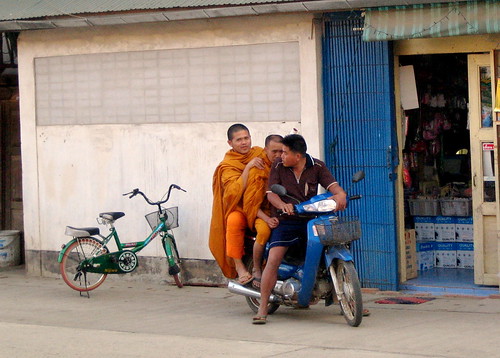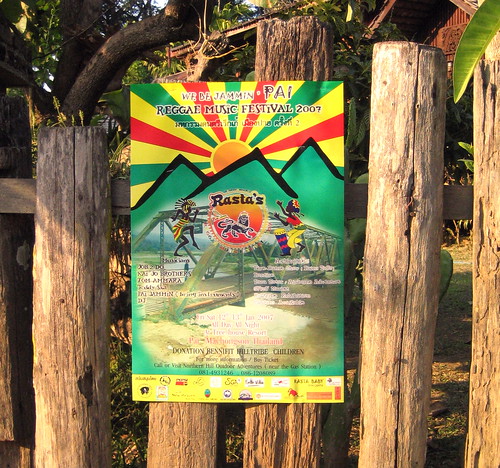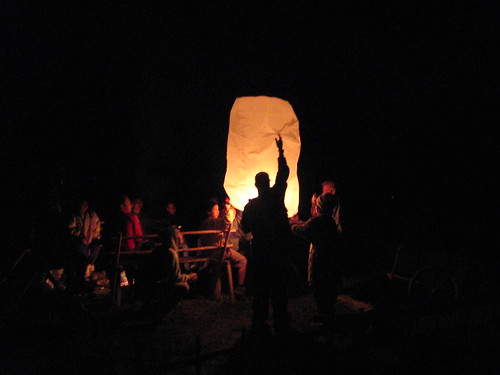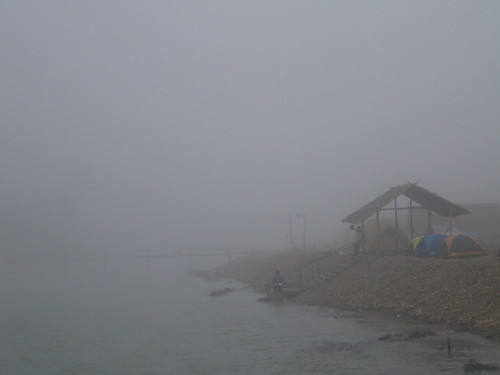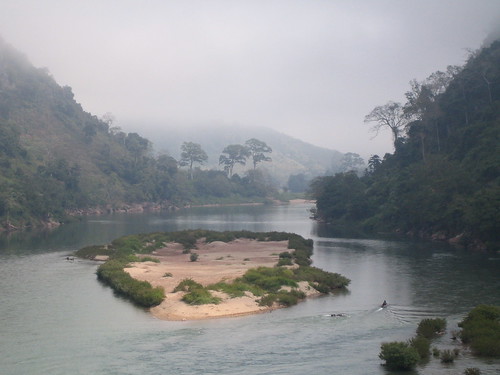
the Nam Ou
As lovely as Luang Prabang was, I was curious to see other parts of Laos. And so I ended up getting up and dawn one morning and dragging Janelle from her hot showers and bacon-stuffed baguettes to the boat dock on the Mekong. We were going to go up the river.
A poor and sleepy little country, the infrastructure in Laos is minimal. There are few roads, and the power grid doesn’t extend far outside of the two or three largest cities. The Mekong river and its tributaries are the country’s main thoroughfares, and a popular route for backpackers. Popular being a relative term in Laos — the day we set out, at the peak of peak season, about a dozen foreigners got onto boats out of Luang Prabang.
The boat took us up the Mekong and its tributary, the Nam Ou (“rice bowl river”) to our first destination, Nong Kiaow. The trip was really spectacular. The rivers wind through mountains like pointed teeth, covered in thick, lush forests. Life in Laos continues along the river as it always has — men out fishing while the women cook and wash clothes and children help their parents or play in the rivers. The people, and the children especially, are amazingly friendly, smiling and waving at the boatload of weirdo foreigners. I’ve heard that deforestation is becoming a problem in Laos, but the forests we passed looked so vast and inaccessible, and the people so dominated by the landscape, that it is hard to reconcile that fact with what I saw.
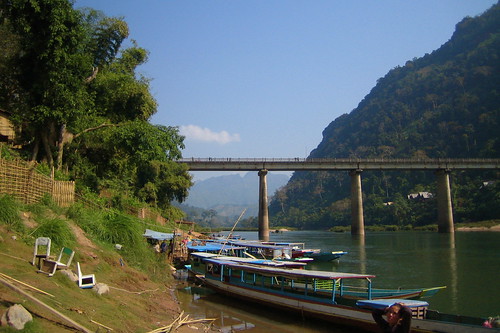 the spectacular bridge across the Nam Ou at Nong Kiaow
the spectacular bridge across the Nam Ou at Nong Kiaow
And then, after hours of motoring down the river (and several breakdowns), we rounded a bend in the river and saw the spectacular bridge that runs through Nong Kiaow. We disembarked and climbed the hundred or so uneven concrete steps from the riverbank to the town.
The top of the steps might as well have had a sign saying “welcome to the third world”. A kind of courtyard with a couple of old Chinese trucks and a few kids and dogs playing in the dirt. There was a shack with a “tourist info” sign, but it looked like it hadn’t been open in quite some time, and a little unmanned ticket booth where you can buy boat tickets. The earth the town is built-on is dusty and a striking orange-brown, and covers everything — buildings, trucks, buildings, dogs, kids. To be honest, after the relative luxury of Luang Prabang, it was a bit of a shock.
However, we gamely made our way forward to the bridge to find accommodations, skipping the dodgy-looking guesthouse by the boat dock, and found the rest of the town to be much more charming. The view from the bridge is breathtaking, and while we crossed, we met a couple of foreigners taking pictures and looking quite relaxed. They turned out to be Canadian (and to know one of the profs in my department), and recommended a very nice guesthouse (the Sunset Guesthouse) which featured $3 rooms and a terrace overlooking the river where you can eat delicious food and drink Beer Lao and Lao-Lao (rice moonshine) while you watch the sun set behind the mountains.
 Beer Lao, the cheapest, best and pretty much only beer
Beer Lao, the cheapest, best and pretty much only beer
We liked Nong Kiaow a lot and debated staying there for a while, but I was curious to check out Muang Ngoi, another town we’d heard of further up the river, so the next day we left most of our gear in the guesthouse and headed to Muang Ngoi.
Muang Ngoi is smaller than Nong Kiaow, but attracts more backpackers, and has a few more guesthouses and restaurants. Not that it is remotely overrun, and the folks that make it out this far are generally seasoned and respectful travellers. Muang Ngoi’s only connection to the outside world is the river — there is no road and no motor vehicles, no banks, no phones, no internet, and in fact, no electricity, except for a couple hours after sunset when the town generator kicks in. Just two-dollar-a-night bungalows and nothing to do but get up with the chickens (really, you have no choice — they are loud), eat Lao food, drink delicious Lao coffee, and lie in a hammock reading and watching the river go by. When the generator shuts off around 8PM, you can eat and drink and walk the streets by candlelight, but by 10, it’s time for bed. And then you wake up and do it again. Our bungalow-neighbours were a pleasant Alaskan couple who had been doing just that for weeks. I could easily have stayed a month.
 your narrator, considering staying in Muang Ngoi just a little while longer…
your narrator, considering staying in Muang Ngoi just a little while longer…
But alas, Vietnam beckoned.
